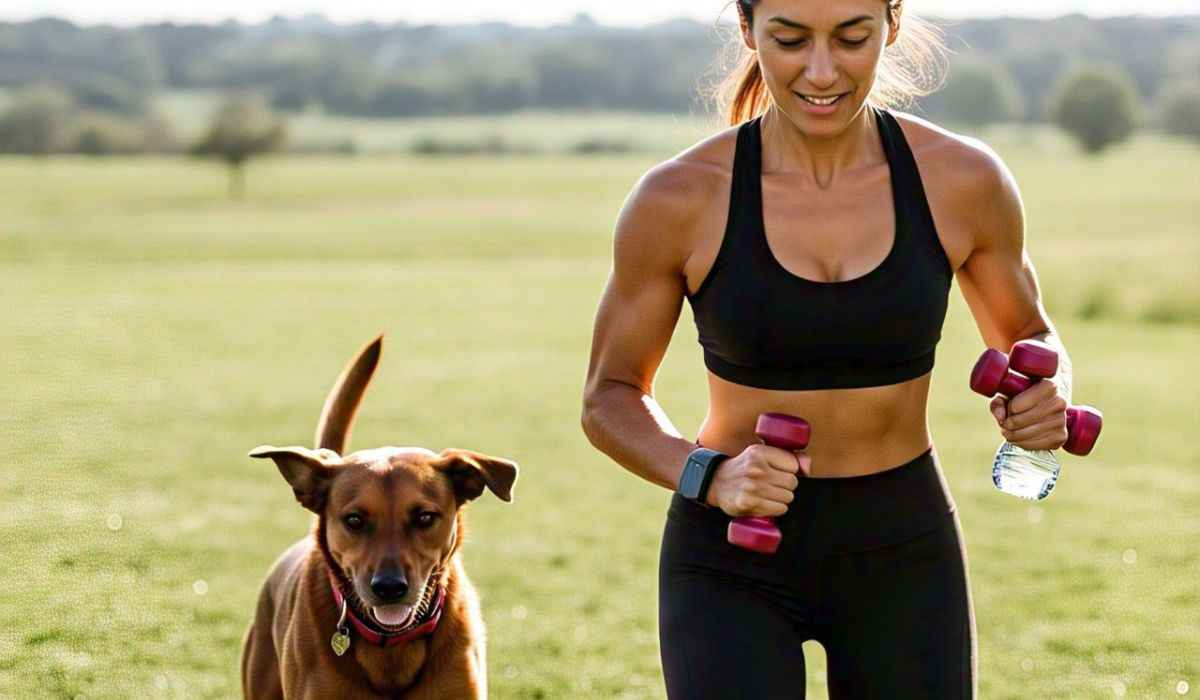 Discover what it takes to turn your dog into a personal trainer (Meta AI)
Discover what it takes to turn your dog into a personal trainer (Meta AI)
With the growing interest in healthy habits, many pet owners have discovered that their dogs are ideal partners for physical activities. Whether it’s a walk in the park or a light jog around the neighborhood, this interaction not only helps combat sedentary lifestyles but also strengthens the bond between owner and pet, bringing physical and emotional benefits for both.
+ Cute Video Captures the Love Story Between a Horse and a Little Girl
Exercising with dogs involves creating a cycle of mutual gains: the owner gains motivation to move and adopt a more active lifestyle, while the dog relieves stress, expends energy, and improves its physical conditioning. Incorporating the pet into activities also promotes a more regular routine, making daily walks an essential part of everyday life and contributing to mental health, cardiovascular fitness, and obesity prevention, even in dogs.
However, doubts about the type and intensity of appropriate exercises can often prevent owners from fully enjoying walks with their dogs.
With this in mind, Mars Petcare, a specialist in nutrition and animal welfare, owner of the brands ROYAL CANIN®, PEDIGREE®, and WHISKAS®, among others, shares tips to help pet owners introduce physical activities in a healthy and safe way into their pets’ lives. Check it out!
Prior veterinary consultation
Before starting an exercise routine with your dog, it is essential to consult a veterinarian. With an assessment of the animal’s health status, considering factors like age, breed, and physical condition, the professional can offer personalized guidance to ensure the pet is fit for exercise.
Gradual start and appropriate activities
Adopting a gradual approach, with light walks, always during cooler times, can help the animal adapt. The intensity and duration of exercises should be adjusted based on the pet’s physical conditioning, respecting its limits. Brachycephalic breeds, such as Pugs, Bulldogs, and Shih Tzus, have respiratory limitations and should avoid intense exercise. Older dogs or those with deteriorating health conditions, such as cardiorespiratory or joint issues, need to follow a lighter and lower-impact routine, always under veterinary guidance.
Hydration and post-exercise care
Keeping the pet well-hydrated before, during, and after exercise and avoiding activities during intense heat is essential to prevent fatigue or hyperthermia. Additionally, providing a cool and comfortable place for the animal to rest after activity can aid in its recovery.
Proper nutrition
It is recommended to adjust the animal’s diet by offering part of the meal before the activity and respecting a two-hour interval between feeding and exercise. The remaining portion should be offered one hour after the activity to ensure a balanced energy replenishment.
This content was created with the help of AI.

